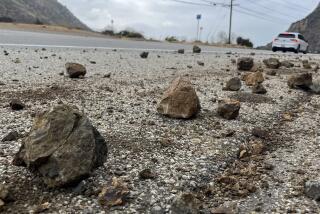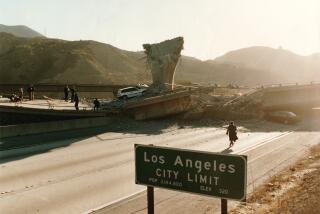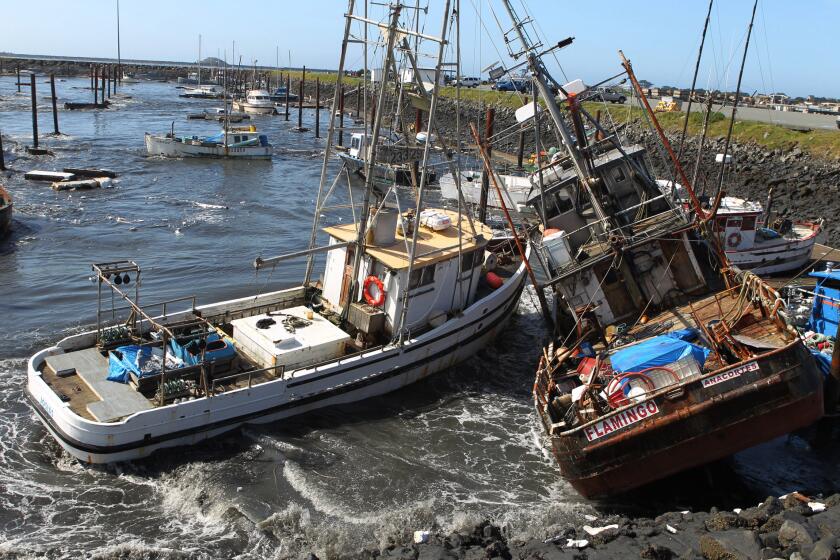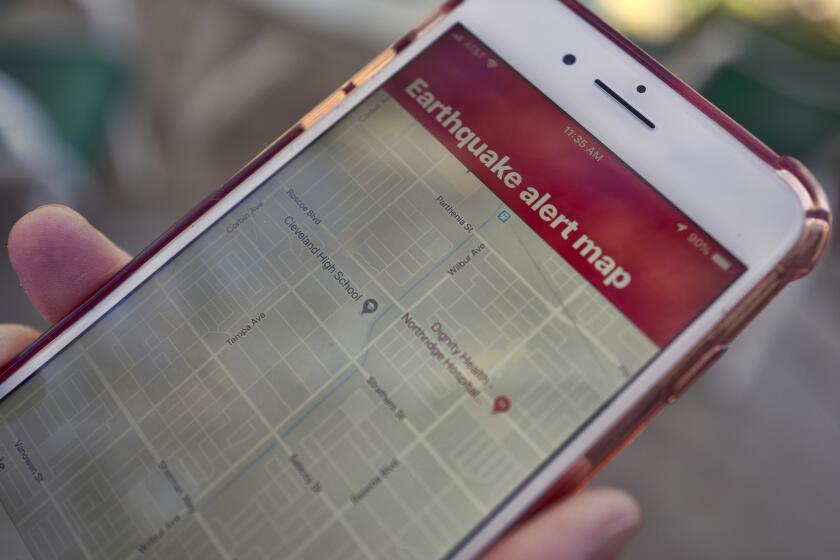More People at Risk as Cities Grow in Quake Zones, Scientists Say
- Share via
SAN FRANCISCO — Because of a “geographical coincidence,” the death toll from earthquakes like the temblor that struck Soviet Armenia on Wednesday will rise dramatically in the coming years, scientists warned this week.
That is because four out of 10 of the world’s largest and fastest-growing cities are located in regions of seismic risk, according to Roger Bilham, a seismologist with the University of Colorado.
At the fall meeting here of the American Geophysical Union, Bilham said that based on the current rate of growth, within 12 years more than 290 million residents of such “supercities” will be at risk. And more than 80% of those people will be in developing nations where most buildings are of poor seismic design.
Doubling of Risk Seen
In the next 35 years, he added, the number of people at risk in those areas will double.
“We are witnessing a trend that we will see more of in the next century,” he said in an interview.
The problem is that more people are moving to cities, and about 40% of the world’s largest cities are within about 100 miles of a tectonic plate boundary or close to a site where an earthquake has caused damage in the past, he said.
That is partly coincidental and partly because the dynamic processes that cause earthquakes also create mountains and seashores that draw people to those areas.
Two giant tectonic plates--the huge slabs of the Earth’s crust on which the continents and oceans ride--created the coastline along the western seaboard of the United States, as well as the rugged mountains of the Far West. But as the Pacific Plate grinds slowly past the North American Plate, the process has also created the San Andreas Fault and hundreds of lesser faults in California, as well as the mighty volcanoes to the north, such as Mt. St. Helens.
Growing Cities Near Faults
The trend continues in developing nations, where many of the fastest-growing cities are at the plate boundaries, Bilham said. “There is an alarming correspondence,” he said.
“Earthquakes, like bombs, are most damaging when their stored energy is released near cities,” he told the geophysical meeting. “Each of the half-dozen or so magnitude-7 earthquakes that occur annually throughout the world is roughly equivalent to a 10-megaton nuclear explosion.”
Brian Tucker, acting California state geologist, said the threat is particularly acute because of the type of construction used in most developing areas. Tucker spent two years studying the seismicity of the region just to the east of Wednesday’s Soviet quake, which wiped out entire communities.
“They are adobe huts,” he said of the houses in the area where the quake struck, “with thick walls, and worse, with thick rock and mud ceilings for insulation.”
He said that during his tour there, he saw an increase “in the sensitivity” of local authorities concerning earthquakes.
Roof Types Changing
The roofs, for example, were gradually being changed to thin sheets of corrugated concrete.
“That would hurt, but it wouldn’t kill you,” he added.
Scientists noted repeatedly during discussions here that many of the tens of thousands killed by Wednesday’s quake died not because they were swallowed up by the earth but because something fell on them.
That may seem like an obvious point, but it underscores the necessity of upgrading building codes in developing nations. But many of the buildings in endangered areas are very old--and thus substandard--and even a city as affluent as Los Angeles has had difficulties bringing older buildings up to new standards.
In developing countries that is even more difficult because funds are so limited.
“They have a serious problem,” Tucker said.
Hope to Identify Risks
However, Bilham has been arguing all week that something can be done. He is involved with a university consortium called UNAVCO, which operates facilities that use satellites and lasers to monitor changes in the Earth’s crust. Ultimately, that technique holds the promise of identifying areas that are under the greatest risk.
“The technology is currently available to implement a global network designed to monitor changes in strain in the land areas of the Earth,” Bilham said.
Eventually, he said, it should be possible to forecast major earthquakes. A forecast differs from a short-term prediction in that it estimates the probability of an earthquake over a period of time, usually several years.
If credible forecasts could be made, Bilham said, it might persuade people to improve their construction methods.
Otherwise, he said, the death toll from earthquakes is bound to rise dramatically in the years ahead.
More to Read
Sign up for Essential California
The most important California stories and recommendations in your inbox every morning.
You may occasionally receive promotional content from the Los Angeles Times.










